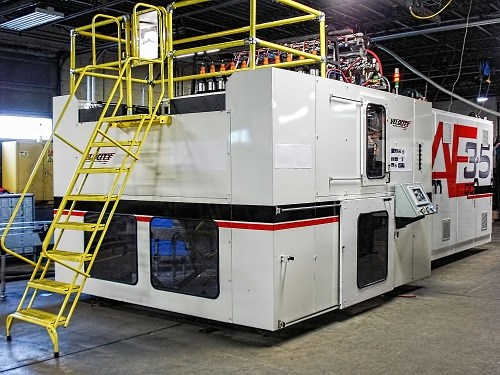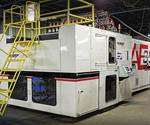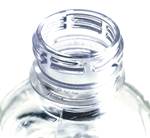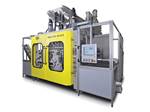All-Electric Drive Impacts Milk-Jug Blow Molding
Although it has taken more than a decade, electric servo drives are starting to hit their stride in blow molding machines.
As you may have noticed in our recent show coverage, most of the new models of shuttle, injection-blow, and PET stretch-blow machines at K 2013 in Dusseldorf and NPE2015 in Orlando were all-electric, hybrid, or servohydraulic driven. Now the revolution has come to reciprocating-screw extrusion blow presses for HDPE and PP milk jugs, detergent bottles, and other high-volume products.
As reported in a Close Up story in our upcoming January issue, a new nameplate in blow molding machines, , is bringing to market what are billed as the world’s first all-electric reciprocating-screw machines that are demonstrating 50% energy savings and 75% reduction in maintenance cost, as well as the quietness, cleanliness, and tighter precision and repeatability that servo drives have established in injection molding. According to VES president Tom Blaszkow, these claims are based on real-world experience at its first customer, Nampak Plastics Europe, a leading molder of dairy bottles in the U.K.
It’s not every day that you encounter a new maker of blow molding machines. Based in New Castle, Pa., VES was formed in 2010 from the equipment division of Portola Packaging (now part of Silgan). Up to now, VES has been involved mainly in rebuilding and upgrading other makes of reciprocating-screw presses. Now it’s shifting resources to focus on building its new line of machines. It will be interesting to see what influence this newcomer may have on the overall reciprocating-screw blow molding market.

Related Content
-
Get Color Changes Right In Extrusion Blow Molding
Follow these best practices to minimize loss of time, material and labor during color changes in molding containers from bottles to jerrycans. The authors explore what this means for each step of the process, from raw-material infeed to handling and reprocessing tails and trim.
-
NPE2024 Wrap-Up: Sustainability Dominates Show Floor News
Across all process types, sustainability was a big theme at NPE2024. But there was plenty to see in automation and artificial intelligence as well.
-
How to Extrusion Blow Mold PHA/PLA Blends
You need to pay attention to the inherent characteristics of biopolymers PHA/PLA materials when setting process parameters to realize better and more consistent outcomes.






